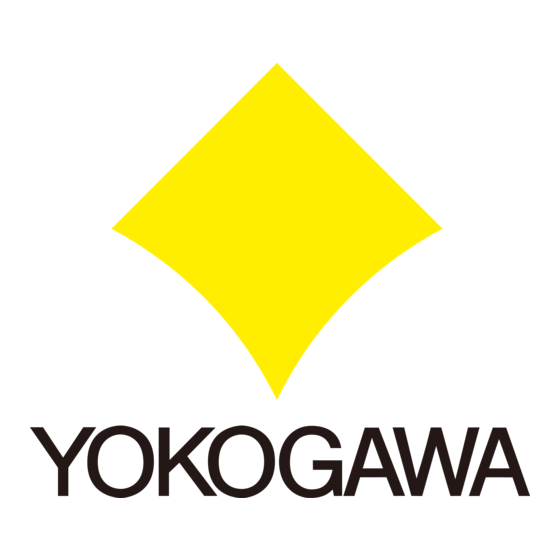
Advertisement
Quick Links
Programming Custom Buffer Tables
FLXA21, comes with NIST Buffer tables pre-programed intot the analyzer. When using the
autocalibration mode, the system uses these preprogramed tables for reference.
However there is an option for customers to change buffer table data information.
There are three sets of NIST buffer tables, pH 4.01, pH 6.98, and pH9.18, by using the free
program options, you can choose to change whichever table and however many
tables you need to change. This document is intended to assist customers with the
steps that need to be taken inorder to to change the Buffer Tables.
1.) Click on the settings icon (wrench)
2.) Using either the the
clicking directly on the diamond next to
Commissioning, select it.
Tech Note: TNA1403
FLXA21-P1 Analyzers
scroll key or by
Date: February 5, 2014
Advertisement

Summary of Contents for YOKOGAWA FLXA21-P1
- Page 1 FLXA21-P1 Analyzers Programming Custom Buffer Tables FLXA21, comes with NIST Buffer tables pre-programed intot the analyzer. When using the autocalibration mode, the system uses these preprogramed tables for reference. However there is an option for customers to change buffer table data information.
- Page 2 3.) Next, selected the diamond next to Measurement Setup 4.) Depending on what your analyzer is set up to measure, the Measurement screen will look differently. If your anlyzer is set up to measure pH only, continue to Setp #5. If your analyzer is set up to measure pH + ORP, Proceed to Step #5a.
- Page 3 6.) Select the diamond next to pH settings, proceed to Step #7 7.) Select the diamond next to Buffers 8.) Next, choose the text NIST/DIN19266 and a drop down menu should appear. 9.) Next, ssing either the the scroll key and enter, or by clicking directly on the choose the Free Programable.
- Page 4 10.) Depending on which buffers you wil be using in your application, click on the diamond next to the User defined buffer that needs to be changed. a. User defined Buffer 1, is the buffer table for pH 4.01; b. user defined Buffer 2, is the the buffer table for pH 6.87;...
- Page 5 12.) Click on each pH value next to the temperature, in order to enter customer pH value for the particular given temperature value. In order to use this feature the customer must have a pH for each given temperature value in 5 degree increments from 0ºC-80ºC.
- Page 6 13.) Once the pH values for the temperatures 0ºC-30ºC have been changed, click on the diamon next the the Next to precede to the next page of the table. Note: You do not have to change all of the values, only the ones that are stated mandatory.
- Page 7 16.) Next select YES under Check Values on the original User Definded 2 Buffer screen. This check is only looking to make sure that the mandatory values are completed. If NO Errors are found the screen should reveal results. However, if a mandatory field was missed the screen would show the error.
- Page 8 17.) If you want to change another buffer table, click the Back Arrow to return to the User Defined Screen and follow steps 10-16. Otherwise click on the home icon (the house), to remain to the main page. 18.) Now when you choose to automatic calibrate the unit will be using user defined pH Buffer.
- Page 9 Appendix: If at any point you would like to reset your analyzer back to factory default buffer tables, you can do so by following the steps below. 1.) Click on the settings icon (wrench) 2.) Using either the the scroll key or by clicking directly on the diamond next to Commissioning, select it.
- Page 10 5.) Choose to Load Factory Factory Settings. 6.) A warning screen will appear. Select Yes. On loading will appear and the unit will restart 7.) Once the system has been restored the unit will automatticaly go back to the main home page. Tech Note: TNA1403 Date: February 5, 2014...











